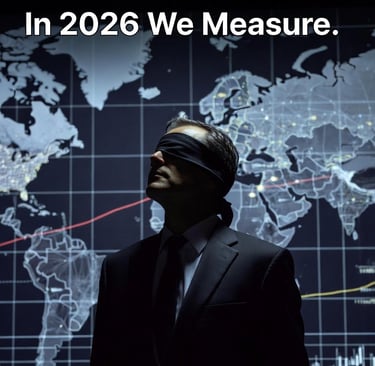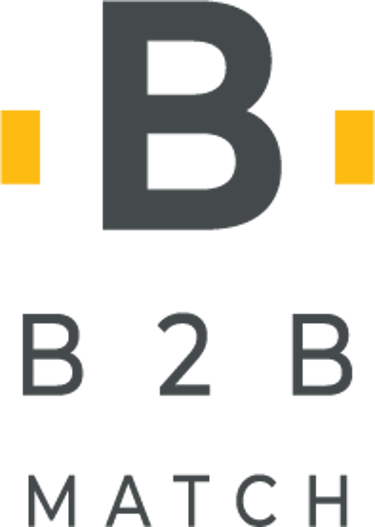A Global Marketing & Sales Performance Analysis of 2025 — and Strategic Preparation for 2026 for Israeli companies
Blog post description.
5 min read
Introduction: 2026 Will Be Costly for Anyone
Still Operating on Gut Feeling
As 2025 ends, Israeli SMBs operating globally encounter a familiar contradiction: On one hand, the pressure to grow aggressively. On the other every geographic, marketing, or sales mistake is painfully expensive when you’re a 30–80 employee company, not a public giant.
Israeli macro data only sharpens this:
In 2023, high-tech accounted for 53% of Israel’s total exports, dominated by software and digital services exactly the categories where small Israeli B2B companies operate.
In 2024, Israeli high-tech exports reached $78B, representing 64% of total exports, with 2025–2026 forecasts predicting 4.5–5% continued growth driven primarily by digital services.
In cybersecurity alone, Israeli companies raised nearly $4B in 2024 more than double 2023 with cyber representing ~20% of economic activity, ~16% of jobs and more than half of tech exports.
In plain terms: The world wants Israeli tech. There is money. There is demand. But competition is fierce and mistakes are costly.
In 2026 there is no room for “I feel this market is good for us.” There is only:
“The data from 2025 proves it’s profitable — or proves it’s bleeding.”
This article answers two questions:
What expensive lessons did 2025 teach Israeli founders and GTM leaders?
How do you turn 2025 data into a sharp, cold, country-level strategy for 2026?
1. The 2025 X-Ray: What the Numbers Really Say About GTM Efficiency
To have a serious strategic conversation, you need numbers not slogans.
CAC, Payback, and NRR — the three numbers that determine whether you grow profitably or collapse quietly.
CAC – Customer Acquisition Cost
How much it costs you to acquire a new customer.
Average CAC in 2024–2025 (per global benchmarks):
B2B general: ~$536
SaaS: ~$702
Fintech SaaS: ~$1,450 (regulation + trust cost money)
If your CAC exceeds what a customer pays you in the first year — your sales engine isn’t a growth engine, it’s a burn machine.
CAC Payback Period
How long it takes for a customer to “pay back” the CAC.
Benchmarks (SaaS 2025):
SMB: 6–7 months
Mid-market: ~12 months
Enterprise: 18–24 months
If a small company has a payback of 18+ months in a certain region that region isn’t “strategic.” It’s simply too expensive.
NRR – Net Revenue Retention
How much revenue you retain and expand from existing customers.
The strongest predictor of profitable growth among ~5,000 SaaS companies is the combination of:
NRR
CAC Payback
Together they form the “Efficient Growth Matrix”:
High NRR + short Payback = growth that compounds (avg. 71% YoY).
Low NRR + long Payback = danger zone (avg. 10% YoY).
For Israeli SMBs in 2026: If you don’t know your CAC, Payback and NRR per country, you’re flying blind.
2. Three Expensive Lessons from Real-World Cases
To keep this grounded, here are real cases — some from global companies, but with direct relevance to small Israeli organizations.
Lesson 1 — Localization is NOT translation: Starbucks Israel
The Starbucks Israel failure (2001–2003) is a classic case study:
Expected to open 80 stores
Opened only 6
Lost ~6M USD
Pulled out of the country entirely
Why?
Because they tried to sell American “coffee-to-go culture” to a market that valued strong espresso, high quality, and long social sitting. Starbucks later described “operational challenges” that made the partnership unviable.
The Israeli SaaS takeaway for 2026: If your sales process or messaging isn’t local culturally, legally, linguistically you are the Starbucks of your category.
Selling “Israeli speed” in Germany, or generic English messaging in Japan, is a guaranteed way to inflate CAC and lengthen sales cycles beyond economic logic.
Lesson 2 — Efficiency over ego: monday.com, Wix, and Riskified
Public Israeli tech companies give a transparent window into how modern SaaS expects you to operate.
monday.com: aggressive growth with discipline
2024 results:
$268M Q4 revenue (32% YoY)
Non-GAAP operating margin 15%
NRD (Net Dollar Retention) ~112%
2025 guidance: continued double-digit growth with profitability
Wix: Rule of 40, operational excellence
2024 highlights:
$1.76B annual revenue
18% bookings growth
First-ever GAAP operating profit
Achieved and exceeded Rule of 40
Riskified: shifting resources between regions
2024 results:
8% YoY revenue growth in Q2, 10% in HY1
54% gross margin (highest since IPO)
Notable: strong performance in APAC + Americas, weaker in EMEA → company shifts expectations + resources accordingly.
The SMB lesson: Big or small, the rule is identical: Invest where ratios are strong — stop where they’re weak. Companies that refuse to cut weak geographies bleed cash.
Lesson 3 — Choosing battles: The geography of Israeli export
Macro reports show:
High-tech exports = ~20% of GDP & ~60% of national exports
Forecasted growth: +4.5% in 2025, +5% in 2026
2024 export growth strongest in Hong Kong & Romania, declines in UK & Canada
Cyber remains a global magnet, especially in Europe and APAC
Meaning: The world buys Israeli tech but not equally from every country. A profitable Israeli company in 2026 must map its strategy to measurable demand, not wishful thinking.
3. Turning 2025 Data into a Sharp, Cold 2026 Strategy
A practical framework for a 30–80 person B2B company with limited GTM resources.
Step 1 — Build a profitability report per country, not per region
For every country you sold to in 2025, map:
Net revenue (ARR)
Gross margin
CAC
CAC Payback (months)
NRR / renewals
Churn
Cross-check with benchmarks: SMB SaaS CAC = ~$300–800, Payback = 6–7 months.
Three mandatory decisions:
Cut / freeze Countries with LTV/CAC < 2:1 or Payback 18+ months.
Double down Countries with LTV/CAC > 3:1 and strong NRR.
Test budget (10%) LATAM, Eastern Europe, APAC — small experiments with KPIs after 90 days.
Step 2 — Win/Loss analysis: the cheapest and most ignored goldmine
Every lost deal in 2025 must be tagged with one primary reason:
Price / budget
Lost to competitor X
Missing feature / compliance mismatch
No urgency
Trust / cultural mismatch
Then evaluate per country:
If 30–40% losses = “price”: wrong ICP.
If 30%+ losses = “compliance/features”: roadmap issue.
If high “trust mismatch” in Germany/Japan: cultural playbook issue.
Riskified’s transparent approach — scaling where ratios are strong, trimming where they’re weak — is exactly the model small companies should copy, even with a simple spreadsheet.
Step 3 — Align Sales & Marketing around real 2026 economics
Marketing shouldn’t report “number of leads.” It must report:
MQLs
Cost per MQL
SQL conversion
By country. Not globally.
If you enter Germany or Japan using only Israeli SDRs and English messaging, you will inevitably see:
inflated CAC
long sales cycles
low win-rates
Companies like monday, Wix and Riskified show the new global standard: growth must be efficient, not superficial.
Step 4 — A Q1–Q2 2026 Action Plan
Reallocate budgets Stop spreading thin. Move budget to 2–3 winning countries.
Focus people Assign each AE/SDR 1–2 countries with localized GTM playbooks.
10–15% test budget Run 90-day experiments in emerging regions.
Mid-year review Recalculate CAC, Payback, and NRR per country. Shift strategy accordingly.
Conclusion: Courage Toward the Data, Not Toward the Presentation
2025 proved once again:
Global demand for Israeli technology remains strong.
Investors reward efficient growth, not “growth theater.”
Companies that don’t analyze 2025 at a country-level risk burning 2026 budgets on ego instead of ROI.
For a small Israeli company operating globally, the bottom line is simple:
Stop assuming. Start measuring. Stop spreading. Start choosing.
Those who analyze 2025 with precision and bravery will enter 2026 with a sharp GTM map, smarter budgets, and a sales organization that only shoots where there’s a real probability of winning.


Address
4/12 Gershon Sharshevski,
Mazkeret Batya, Israel


